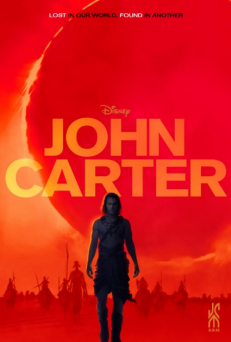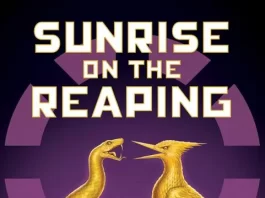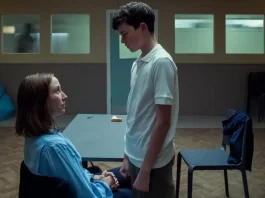Print Edition: March 14, 2012
 “Everyone thinks their cause is virtuous,” says a character in John Carter, but he might as well be describing the new breed of action-directors in Hollywood. Linked by their preference for Michael Giacchino as cannonading composer, they speak with reverence for the generation of directors that preceded them—just as that generation once did—but in actuality cast off the years of accumulated craft that ran through the productions of their forbearers. More often than not, they seem to prefer to do things in their own lazy-eyed digital way. This is certainly the case for Andrew Stanton. Coming from the Pixar factory, his direction of live action photography leaves much to be desired: edits hide and obfuscate the already prevalent digital creations, the simple blocking of the actors fails to take advantage of the widescreen frame, and there are permanently haloed heads in practically every shot, leaving no doubt that the light source is not the bright yellow sun, but artificial lighting used to allow for the green screen.
“Everyone thinks their cause is virtuous,” says a character in John Carter, but he might as well be describing the new breed of action-directors in Hollywood. Linked by their preference for Michael Giacchino as cannonading composer, they speak with reverence for the generation of directors that preceded them—just as that generation once did—but in actuality cast off the years of accumulated craft that ran through the productions of their forbearers. More often than not, they seem to prefer to do things in their own lazy-eyed digital way. This is certainly the case for Andrew Stanton. Coming from the Pixar factory, his direction of live action photography leaves much to be desired: edits hide and obfuscate the already prevalent digital creations, the simple blocking of the actors fails to take advantage of the widescreen frame, and there are permanently haloed heads in practically every shot, leaving no doubt that the light source is not the bright yellow sun, but artificial lighting used to allow for the green screen.
Stanton evidently has some degree of love for the source material. However, the sentiment of tribute to a beloved author doesn’t travel far when it doesn’t translate into images with any idea of what it means to set a singular tone, such as the sense of adventure felt by John Carter aficionados when reading an Edgar Rice Burroughs’ story, or evocative aridness like a journey onto Mars should have as a bare minimum. All is left to the artificial; nothing is learnt from what has been passed down, and what is left is an empty cause for John Carter and Andrew Stanton to embark on.
But Stanton presses on anyway, determined to verbalize this story rather than let it unfold via images and distinct acting. What little bit of ability shines through in leading-man Taylor Kitsch’s performance is gone by the time he arrives on Mars, or Barsoom, as the planet is called by its inhabitants. He becomes a marker on a map, saving a princess here, then returning there to retrieve an item, then after some careful pointless deliberation deciding he likes the whole planet and wants to be its hero — as if there was ever any doubt. If there’s anything remarkable to point out about Kitsch’s trying position in the movie, it’s that at least he doesn’t have the unenviable role of Lynn Collins, the princess who alternates between being saved and saying that she doesn’t need to be. Like so many scripts today, John Carter’s states banal war concerns before indulging in them anyways, and points out problems of female depiction on the screen states problems of female depiction on the screen (“It’s a little vulgar for my tastes”) even as it is still being worn for all to see. There is no room here for any levity or gravitas in the character progression as Princess Dejah Thoris goes from warrior to “property” to warrior to property of John Carter. The few saving graces of the film come briefly in the form of the relentlessly charming James Purefoy, who looks here no different than in his defining role in the television series Rome, and Dominic West, who, after his success in theatre after The Wire, brings the experience of playing Shakespeare’s Iago to his role as villain.
If there’s anything author Burroughs’ work resembles, and John Carter the movie apparently hopes to, it is a series. Stanton and co-writers Michael Chabon and Mark Andrew seek to pack in story and set a stage, much like an overblown television pilot. Its editing rhythms, aside from some early flourishes—Eric Zumbrunnen is most well-known for his collaborations with Spike Jonze—pathetically connects, rather than creates, scenes. There is so much here that could be sized differently, altered, and adapted for the screen—which is what the film is supposed to be in the first place—that it is clear Andrew Stanton had little in mind of making this into a movie. Indeed, that this installment concludes just as it is apparently beginning—we witness his Barsoom rebirth more than two-thirds into the movie—gives John Carter’s endpoint the resemblance of nothing more than a “tune in next time.” Movies made as products aren’t anything new, but replacing surprise and wonder with inevitability unending is the final death knell for a movie that could hardly be said to be alive in the first place.




